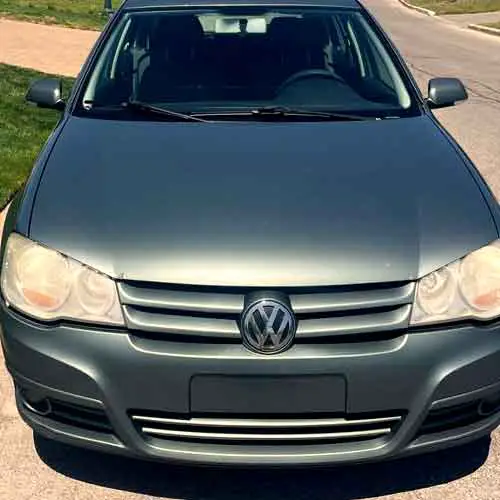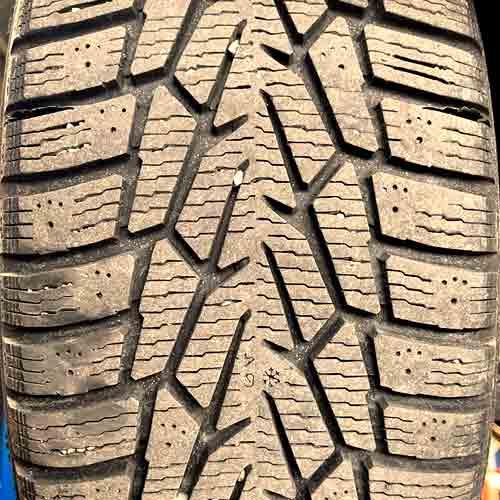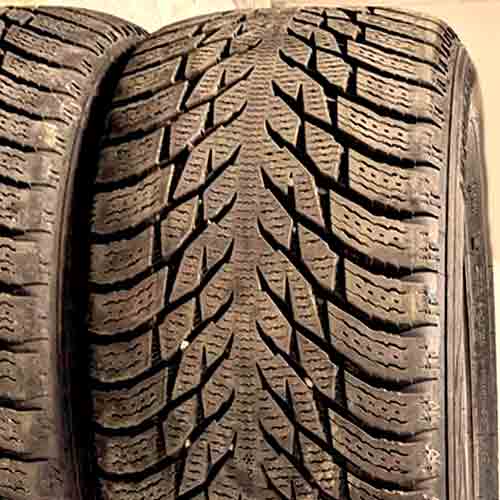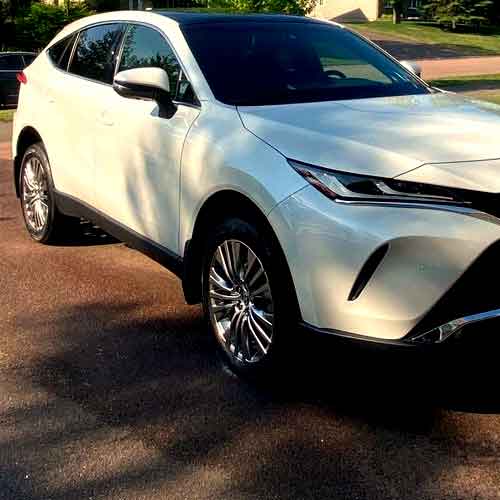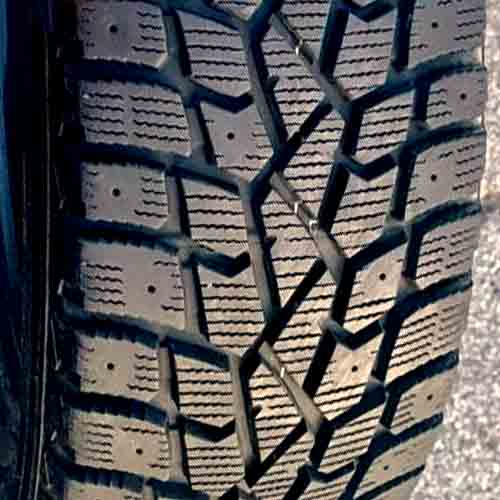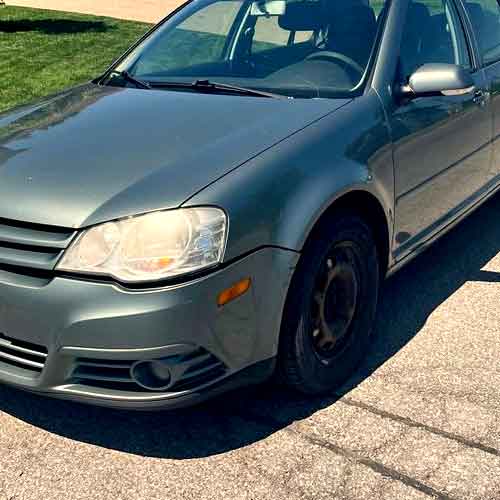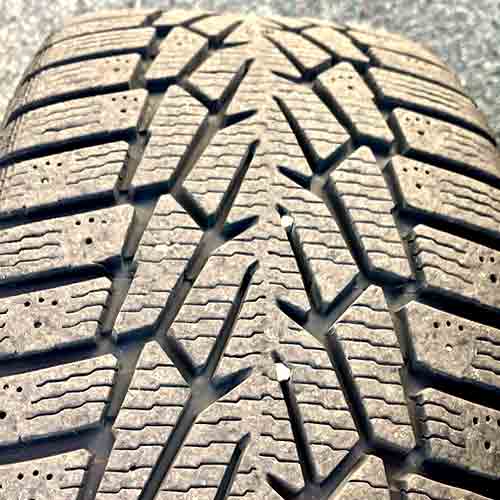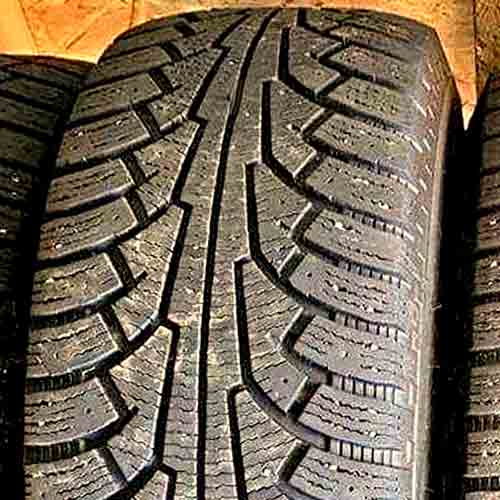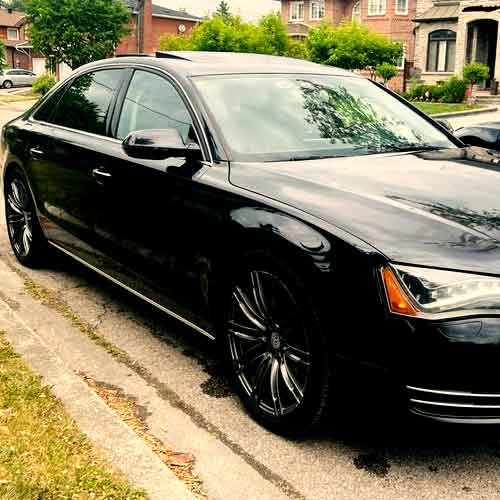From the renowned Finnish brand, the Nordman 7 is Nokian’s reliable winter companion, offering pretty decent overall snow and ice traction, with it’s studable lugs. Let’s see what else this tire has to offer.
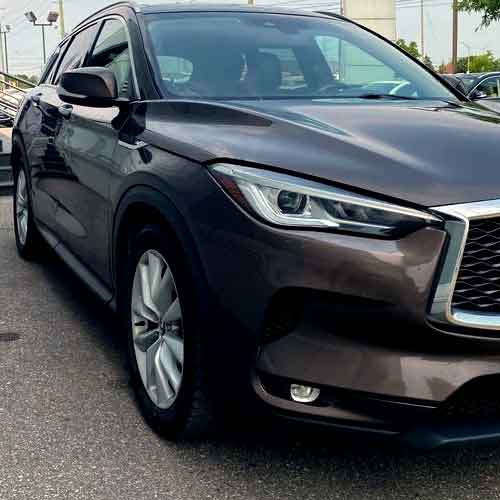
Key Takeaway
So overall, the Nordman 7 tire comes with a mixed bag of results. It excels in:
- Superb snow traction, offering impressive overall grip in snowy conditions.
- Solid ice traction with above-average braking and acceleration capabilities.
- Effective hydroplaning resistance, ensuring above-average float speeds.
- A comfortable ride quality, thanks to a softer compound and an internal nylon cap ply.
However, there is room for improvement in certain areas:
- Dry performance, particularly in terms of braking distances.
- Overall handling, with lacking steering responsiveness.
- Wet traction, struggling with wet grip and handling despite decent hydroplaning resistance.
- Fuel economy, as the tire falls short due to relatively high rolling resistance.
- Tread life, while acceptable, is still below average.
Info on sizes: Nordman 7 comes in 34 sizes in 13 to 17 inches rims. All sizes are speed rated with T, and have SL/XL load ratings. Moreover, all of them have 13/32″ of tread depth and weight range of 15 to 27 lbs.
Tread Appearance
The Nokian Nordman 7 comes with a directional tread pattern, as commonly seen on most of the winter tires out there.
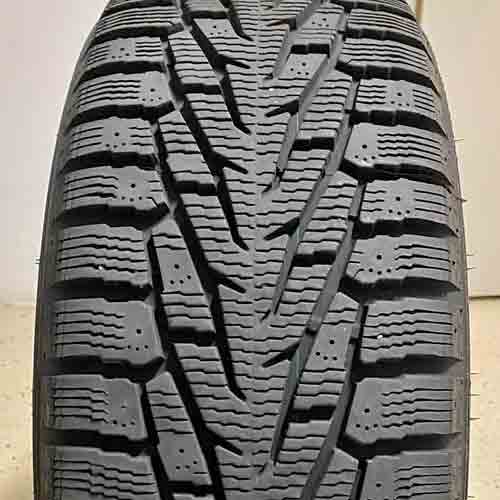
Now the tire is clearly divided up in to two parts, shoulders and central lugs (which resemble tree branches).
Starting with the shoulders, the lugs are more refined here, compared to the middle.
Slanted lugs dominate this area, enriched with a ton of tread features like varied siping designs, offset edges, and stud holes.
Moving towards the tire’s central region, the tread here offers the most intriguing design elements. Here, two distinct ribs are present, with the central-most rib resembling a vine adorned with robust leaves.
Each lug in this area features pronounced in-groove notches.
To enhance their traction, these lugs are equipped with biting edges and an abundance of sipes.
The adjacent lugs share similar characteristics but also have sharp offset edges.
Dry Performance
Dry traction remains essential, even for winter tires. It’s majorly about the rubber’s contact with the road, further categorized into directional grip and lateral traction, combined with tire’s overall steering characteristics.
Let’s check them all.
Linear Grip
Linear grip focuses on a tire’s straight-line stability, relying on the central tread’s contact with the road. Moreover, as this grip is directional it’s measured by tire’s braking efficiency.
Having said that, it makes sense why the Nokian’s tire here is one of the most lacking tire here, I mean relatively, comparing others in its category.
But why is that happening, even though the tire features continuous running rib in the very middle, forming consistent rubber to road contact at all times.
Well, this has to do with the tire’s relatively greater average weight (seeing all sizes, and comparing it with others). With this the tire actually produces more momentum, which is not easier to stop.
The result, you see almost 15 feet longer braking distance on Nordman 7, compared to the top ranking tire here (GT Radial IcePro 3).
Lateral Grip And Steering
Dry handling combines lateral traction and steering feedback. The tire’s shoulder lugs determine its lateral grip since they interact more with the road during turns, while steering comes by a lot of variables.
Now, in terms of grip, the Nokian Nordman 7 is actually pretty great, offering decent values, as seen by its lateral g forces generated (on average).
However, overall the tire still comes below average when it comes to overall handling.
But why? Well, this has to do with it’s lacking steering feedback.
Actually, the tire comes with greater relative weight and more tread depth, causing lugs to flex more as the tire corners. This leads to lagging and vague steering, especially when it comes to mid-cornering feedback.
Moreover, with slower braking, the tire also takes more time slowing down before entering the corners, hurting its overall handling scores.
Wet Performance
The tread design and rubber composition of a tire influence its wet traction, focusing on wet grip and hydroplaning resistance.
Wet Traction
Wet grip, akin to dry grip, depends on the rubber’s contact with the road. However, water can impede this contact, necessitating water displacement by the tire’s grooves and sipes.
While grooves expel most of the water and offer hydroplaning resistance, sipes further clear water at a microscopic level, enhancing ground contact.
Now just like seen on dry, the Nokian Nordman 7 again comes at the bottom (comparing its direct competitors), in terms of wet longitudinal grip.
And same is the case with its handling as well, where it’s weight yet again causes slower response times.
(It lacks to its Ice Pro 3 by over 3 seconds in overall handling lap times, averaged).
Though the tire is pretty decent in terms of hydroplaning resistance, which is another crucial factor here.
Hydroplaning
Hydroplaning occurs when water gets trapped between the tire and the road. As water isn’t compressible, if not properly channeled out, it can lead to a loss of traction.
This is where the tire’s grooves play a role, redirecting the water and preventing hydroplaning.
And the Nokian Nordman 7 being pretty voided up, does a pretty decent job here, offering above average float speeds on average.
It’s vine shaped lugs in the middle, complimented by its directional pattern easily throw water/slush out and allow for decent curved and straight aqua scores (as seen on tests).
Overall Winter Performance
The efficiency of a tire in winter is primarily assessed by its performance on ice and snow.
Snow Traction
Snow traction describes the tire’s effectiveness on snow-laden roads. It’s not just about digging into the snow but also releasing it to prevent accumulation.
Simply put, tires need to make effective snow-to-snow contact here, which generates more friction than rubber-to-snow contact.
And this is where the Nokian Nordman 7 redeems itself, coming out as one of the top ranking tires among its direct competitors, offering superb snow braking, acceleration and overall traction values.
Side Note: If snow traction is your primary need, you should know that the Michelin X Ice Snow offers the best results, though its way more pricey, in comparison. Review that tire here: https://snowytires.com/michelin-x-ice-snow-review/
Ice Traction
Ice traction denotes the tire’s ability to grip and stabilize on icy surfaces. Given the minimal friction of ice, a tire’s rubber compound and tread design become essential.
So effective tires here should have numerous and flexible “biters” that can remain functional with freezing conditions.
Now, the Nokian Nordman 7 is again pretty great here, where although it’s handling can be improved a little, it offers above-average braking and acceleration values.
Also, since the lugs are stud-able, you can further improve it’s overall ice performance.
Fuel Economy
Fuel efficiency of tires is tied to their weight and traction, both affecting rolling resistance.
And to put things into perspective, heavier tires with large tread gaps tend to flex more during maneuvers, consuming more energy that would otherwise assist in tire movement.
Now, as already mentioned, the Nokian Nordman 7 is a pretty bulky tire here, relatively speaking. And that combined with it’s voided up structure, you get greater weight focusing on small rubber area.
Do the math, and you get very high rolling resistance values.
Though the tire is still not so bad, and is better than reputable tires out there, namely Hakkapeliitta 9 and Toyo Observe Ice Freezer.
I mean given, its price tag, it’s okay to see a little lacking mpgs here.
Comfort Performance
The comfort of a tire hinges on factors like road noise and vibration absorption, which are influenced by its construction, materials, tread pattern, and sidewall design.
Tread Noise
Noise from the tread arises due to air particles colliding with the tread walls. Essentially, larger tread gaps tend to produce more noise.
Now, the Nokian Nordman 7 with such voided up structure, should make a lot of noise, but its saved by it’s variable pitch tread, producing different tones (on different lug areas), as air particles hit them.
This results in limited in-groove resonance, as those generated tones don’t get to amplify together, in-fact, they try to cancel out each other’s frequencies.
For Your Info: Among it’s direct competitors, the loudest tire in the group is the Toyo Observe Ice Freezer, while the quietest is the Michelin X Ice North 4.
Road Vibrations
Road smoothness is highly dependent on tires, as they act as secondary suspension system, cushioning against road irregularities.
And since this highly depends on how tire are made, both internally and externally, it can be explained why Nokian Nordman 7 offers top notch (subjective) scores here.
Externally, the tire benefits from a softer compound that adeptly absorbs road irregularities. And internally, its nylon cap ply plays a crucial role, serving primarily to regulate and evenly distribute the impact of road bumps.
Tread Longevity
Tread life is influenced by rolling resistance and tread depth.
Now, the thing is, greater tread depth indicates a longer tire life, since with more depth, tire should technically take longer to reach down to time-to-replace levels.
But it also adds to heat and rolling resistance, which affect tread life negatively.
Having said that the Nokian Nordman 7 is okay here. Not too bad or good. And like most winter tires, it also doesn’t come with any treadwear warranty.
Though you can easily get 30k miles out of them.
Conclusion
So overall, the Nokian Nordman 7 has its strengths and weaknesses in various performance aspects.
On the positive side, it excels in snow traction, offering superb snow braking, acceleration, and overall traction values. And yes, it’s ice traction is also a strong suit, with above-average braking and acceleration.
Furthermore, it performs well in terms of hydroplaning resistance, providing above-average float speeds.
However, there are areas that need improvement. I mean, in terms of dry performance, the tire lags behind its competitors, resulting in longer braking distances.
And its overall handling, particularly mid-cornering feedback and responsiveness, could also be enhanced.
Additionally, when it comes to wet traction, the tire struggles with wet longitudinal grip and handling, although it offers decent hydroplaning resistance (as already mentioned).
Moreover, the tire also lacks in terms of fuel economy, with its greater generated (average) rolling resistance, which also affects its tread life, though tread longevity is still good enough for a winter tire.
Moreover, the tire is okay in terms of comfort, and provide you with good vibration soaking abilities.
